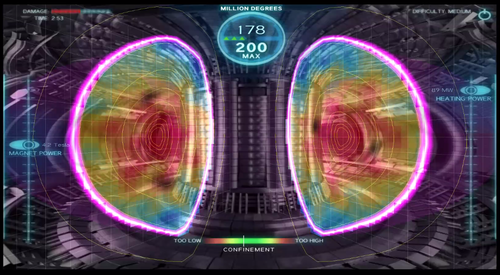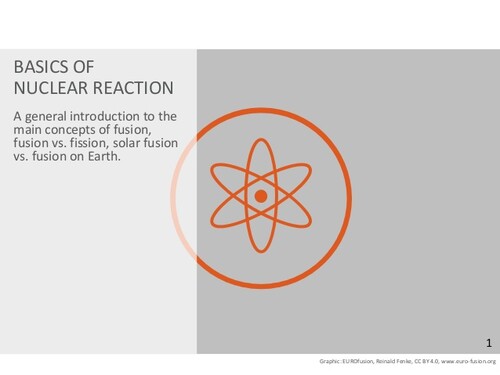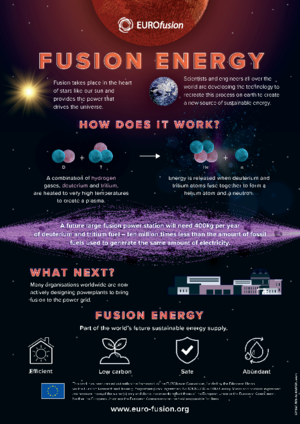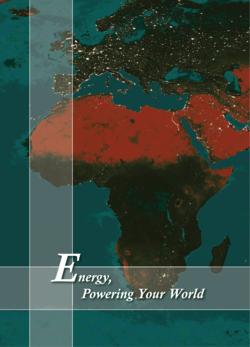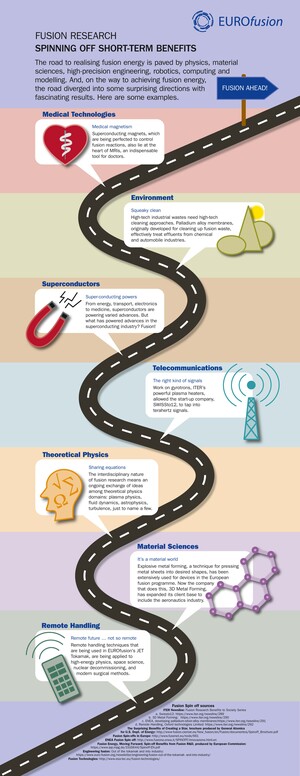Nuclear Fusion for Schools
The information material related to nuclear fusion provided below addresses both interested teachers and students. Selected videos, animations, booklets and brochures listed below have been specifically produced for in-class use and aim to deepen existing knowledge. You can also find various useful links below.
Fusion Energy Explained
Fusion Energy could change the planet. But what is it and why don't we have it? Physicists Andrew Zwicker, Arturo Dominguez and Stefan Gerhardt explain how Fusion energy could be a gamechanger for the world's energy problems.
On the PHD Comics website two games help you to learn more about the conditions for nuclear fusion and about magnetic confinement fusion.
Source: ITER Educational Resources, PHD Comics
The Easiest Thing Nature Does - An Introduction to Fusion Energy
The Starmakers
The movie introduces a future fusion reactor, explaining basics of fusion.
Produced in 2000 by the Centre de Recherches en Physique des Plasmas, École Polytechnique Fédérale de Lausanne, with financial support from the European Commission, it offers a virtual visit of a reactor based on ITER design, sending the viewer some 10 to 20 years into the future.
Operation Tokamak
The scene takes place in the year 2103. Energy generation from nuclear fusion has already been realized. You are the operator of a typical nuclear fusion power plant. The objective of the game is to achieve ideal fusion conditions and control the plasma by shaping the magnetic fled, increasing the heat with the help of powerful microwaves and blowing away interfering magnetic islands.
Source: Max Planck Institute for Plasma Physics
Free App, Download link: Google Play Store, App Store
Infographics Fusion Energy
Virtual ITER Tour
ITER – designed to demonstrate the scientific and technological feasibility of fusion power – will be the world's largest experimental fusion facility. The ITER Project is under construction in Saint-Paul-lez-Durance, in the south of France. The ITER website offers an interesting 3D virutal 360° tour.
Booklet - Energy, powering your world
The booklet "Energy, powering your world" is a 60-page informative text about energy in general – the ways we use it, where it comes from, and how we will deal with our energy needs in the future. This booklet is very helpful for secondary school teachers' work, but it is suitable for everyone interested in energy related-issues.
Fusion 2100 – Classroom of the future
The movie is set in a classroom in the year 2100. A teacher explains to students the basics of fusion and the history of fusion research using futuristic teaching kits.
FuseNet Educational Materials
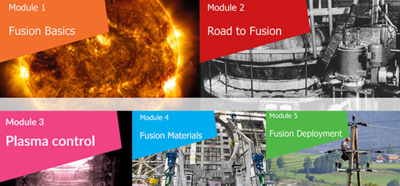
FuseNet has developed educational materials for secondary schools. The goal of these materials is to provide secondary school teachers with all the tools required to teach nuclear fusion in fun and engaging lessons. The teaching materials consist of five modules: Fusion Basics, Road to fusion, Plasma control, Fusion Materials and Fusion Deployment.
Each module consists of a student reader, lecture slides, a teacher's manual, and additional exercises.
Fusion Spin-Offs
Make your own Tokamak!
TheITER Organization has collaborated with the Hungarian Centre for Energy Research to create a 3D-printable model of the ITER Tokamak (1/100th scale) for students, teachers, and "makers" around the world. This video shows the use of the model. Here you can find more information and a complete user guide for the 3D printing of the ITER Tokamak model.
Quelle: ITER
Other useful links
Find further interesting information regarding nuclear fusion at the links below:
- Conditions to Create Fusion on Earth
- Fusion Devices and Fusion History
- All about Tokamaks
- All about JET, the Joint European Torus
- An Overview of ITER
- The Medium Size Tokamaks of EUROfusion
You can find more educational material related to nuclear fusion using the links below:
- FuseNet – educational material
- Max Planck Institute for Plasma Physics – information for teachers and schools
- EUROfusion – "Talk and Tell" presentations about the basics of nuclear fusion
For further links, please view this page in German.
